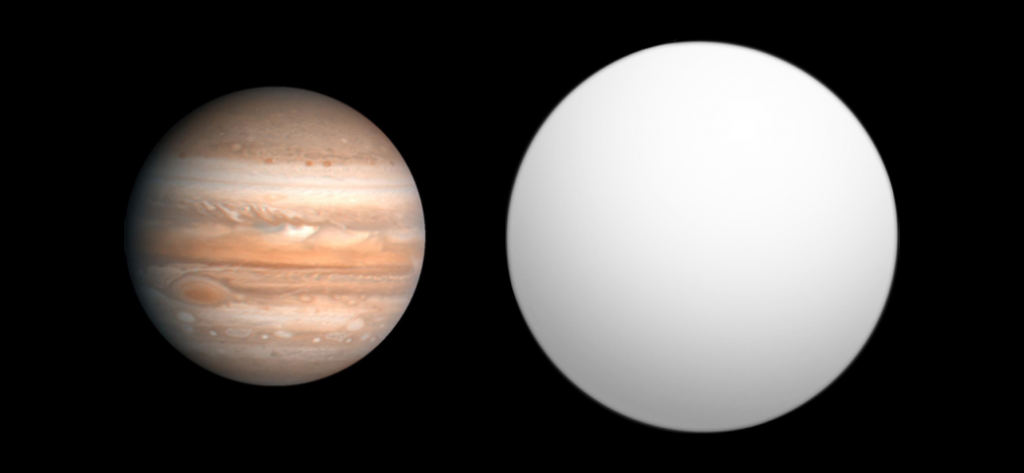The rocky planet Earth is the place in the cosmos that people know best. It’s hardly surprising, however, that people are driven by a desire to speculate what other celestial bodies may be like. Several missions, such as NASA’s Transiting Exoplanet Survey Satellite (TESS) and its Kepler spacecraft, are supporting the scientific interest regarding whether planets exist beyond the sun’s neighborhood

●⫸ What are Exoplanets?
Planets that orbit stars other than our sun are known as exoplanets. The word exo derives from Greek and means “outside,” implying that these worlds are far outside our solar system. Exoplanets circling distant stars have been verified by astronomers more than 4,000, with at least 1,000 more awaiting confirmation. In 1992, they discovered the first two exoplanets around a pulsar.
In 1995, they discovered the first exoplanet circling a sunlike star. Before those findings, the presence of planetary systems other than our own had been suspected for millennia, and a planet was predicted for Barnard’s Star in the early twentieth century (it later turned out to be spurious). True breakthroughs were made when technology advanced, which was a relatively recent event.
●⫸ Why search for Near-Earth planets?
Exoplanets, or planets outside of our solar system, are studied to help answer issues regarding our role in the solar system and the cosmos. Learning about enormous gas giants, for example, can help us better comprehend how Jupiter, one of Earth’s great cosmic shields, came to be where it is now.

The uniqueness and value of our planet are highlighted by the search for rocky planets in habitable zones around their different parent stars. And seeing what’s possible in the world surely piques our interest.
●⫸ History of the discovery of Exoplanets by NASA
The first discovery of exoplanets was noted in the 1990s, and many have subsequently been detected using various detection methods. Astronomers seldom view an exoplanet through their telescopes in the same way they might see Saturn via a telescope from Earth. This is known as direct imaging, and only a few exoplanets have been discovered this way (and these tend to be young gas giant planets orbiting very far from their stars).
We now live in a cosmos populated by exoplanets. The number of proven planets is in the tens of thousands, and it’s growing. That’s just a small sample of the entire cosmos. As we expand the number and observation capability of robotic telescopes lofted into space, the count might reach the tens of thousands within a decade.
The transit approach, which involves measuring the dimming of a star that happens to have a planet pass in front of it, or watching the spectrum of a star for tell-tale evidence of a planet tugging on its star and causing its light to gradually Doppler shift, is how most exoplanets are discovered.
Thousands of planets have been discovered by studying “transits,” the modest dimming of a star’s brightness when its tiny planet passes between it and our telescopes. Gravitational lensing, sometimes known as the “wobble method,” is another way of detection.
●⫸ Recent discoveries of Exoplanets
● Exoplanet in another galaxy:
Scientists released a paper in October reporting what they believe is the first-ever finding of an exoplanet outside of our galaxy. This exoplanet candidate was discovered in the Whirlpool Galaxy (Messier 51), a 28 million light-year distance from Earth.
The transit method, in which astronomers seek for dips in a star’s optical brightness to find exoplanets, is one of the most often utilized methods. At least from Earth’s perspective, the dim periods frequently imply that a planet is passing in front of the star’s face. This is how astronomers locate extraterrestrial worlds using spacecraft like TESS.
However, astronomers have added a twist to this procedure to locate the potentially supergalactic planet. M51-ULS-1b was discovered by scientists who were hunting for dips in X-ray brightness rather than variations in optical light when they discovered this exoplanet candidate. The astronomers were able to observe the objects transiting stars from a greater distance in space thanks to X-ray measurements.
The researchers scanned various places across many galaxies with NASA’s Chandra X-ray Observatory and the European Satellite Agency’s XMM-Newton space observatory, all in the hopes of finding a planet beyond the Milky Way.
The researchers looked at 55 distinct star systems in the Whirlpool galaxy alone. M51-ULS-1b, a possibly Saturn-sized exoplanet orbiting its parent star and an exceedingly massive object (like a neutron star or black hole) at nearly twice the distance Saturn circles the sun, was discovered there.
● Astronomers capture a planetary baby photo:
As light bounced off this newborn world, astronomers were able to acquire a picture of a baby exoplanet. It’s not every day that you come upon a photograph like this. The planet in this picture is close enough to Earth that it was photographed by the Subaru Telescope on Hawaii’s Mauna Kea volcano’s summit. 2M0437b is an intriguing exoplanet.
This planet is one of the youngest exoplanets yet discovered, at a distance of only 417 light-years from Earth. It is significantly younger than the solar system’s planets, for example. Because the Earth is just a few million years old, it is still forming and as a result, its surface is extremely hot, maybe as hot as lava.
The planet was discovered in 2018, but it took three years for astronomers to establish its existence since its parent star travels slowly across the sky.
● Rogue planets could be bending light and be revealing themselves
Astronomers discovered 27 probable rogue planets using a mechanism known as gravitational lensing. These Earth-sized worlds are not tethered to a star like ours is to the sun, but instead, drift freely in space.
In July 2021, astronomers reported their results, but further observations will be needed to prove the presence of these planetary visitors. Because planets don’t orbit stars at regular intervals, optical light studies that measure stellar brightness or dimming can’t be utilized to detect stray celestial bodies.
Rather, researchers examined data from NASA’s planet-hunting Kepler satellite telescope over two months in 2016 to find hints of uncommon gravitational microlensing occurrences. When the gravity of a big foreground object (such as a rogue planet) bends the light of a more distant star or quasar, this is known as a light-warping moment.
Astronomers may be able to corroborate these discoveries with future observations from missions like NASA’s Nancy Grace Roman Space Telescope and the European Space Agency’s Euclid project.
● A planet-making ring outside our solar system
If the image of a newborn exoplanet wasn’t charming enough, astronomers managed to capture another extraterrestrial world at an even earlier stage of development. The first known moon-forming disc around a planet beyond the solar system was identified this year by experts.
A primeval ring of material travels through space around PDS 70c, a Jupiter-like exoplanet. PDS 70c is still in the early phases of development, together with a partner fetal planet. The discovery of this system is a breakthrough for astronomers interested in learning more about how protoplanetary discs create planets and moons in the early stages of a system.
This system’s circumplanetary disc is nearly 500 times bigger than Saturn’s rings and is 400 light-years distant. This ring of cosmic debris is thought to be large enough to construct three entities the size of the moon, according to scientists.
● A fresh atmosphere might have been created by an exoplanet
GJ 1132 b, a planet 41 light-years distant that orbit its parent red dwarf star once every 1.5 Earth days, is thought to have experienced something similar. Astronomers examined Hubble Space Telescope images of this exoplanet and discovered evidence that the planet’s present atmosphere did not exist when it originated. Gases released from the molten rock on the planet might have formed the unusual new atmosphere, according to one theory.
The James Webb Space Telescope, Hubble’s replacement, is scheduled to launch on December 25, 2021. The equipment on board this next-generation observatory may be able to assist scientists in better understanding what’s going on with GJ 1132 b once it’s up and running.
● Possible water clouds in a Neptune-like exoplanet
According to a study published this year, one exoplanet’s upper atmosphere may include clouds of water. TOI-1231 b is 90 light-years from Earth, orbits its tiny parent M dwarf star in about 24 days, and is somewhat smaller than Neptune.
While the results concerning its atmosphere revealed this spring are promising, further observations will be required to prove if water clouds are truly floating in the atmosphere of this world.
When compared to other comparable planets, TOI-1231 b is a temperate world with a comparatively chilly atmosphere. This gaseous planet, which is about 3.5 times the size of Earth, might have a dense water-vapor atmosphere, according to an early study. If future measurements from observatories like the JWST indicate that this isn’t the case, the planet’s atmosphere might match Neptune’s hydrogen-helium composition more closely.
● Exoplanet with shortest-known orbit is detected
Astronomers using NASA’s TESS satellite identified an exoplanet that orbits its star in just 16 hours. This world, designated TOI-2109b, is likewise approaching its star at the quickest rate yet recorded. TOI-2109b is a gas giant that orbits near to its parent star, a type of “hot Jupiter.”
Approximately 400 of these planets have been discovered so far by astronomers. This world is one-of-a-kind: it’s five times the mass of Jupiter, twice the mass of our sun, and the second-hottest exoplanet ever discovered.
The planet’s closeness to its parent star and the fact that its tidally-locked dayside never moves away from the star might be to blame for the planet’s extreme heat, which reaches over 6,000 degrees Fahrenheit (3,300 degrees Celsius).
TOI-2109b is a star in the constellation Hercules that is approximately 855 light-years from Earth. On November 23, 2021, a paper outlining TOI-2109b was released.
● A Neptune-sized exoplanet might be found around Alpha Centauri A
Near Earths in the Alpha Centauri Region (NEAR) is a $3 million study that has been looking for planets in the habitable zones of the Alpha Centauri system’s stars. At a distance of a little more than 4 light-years, these stars are just a stone’s throw away from Earth. This year, the team revealed evidence pointing to the existence of a previously undiscovered planet in the system.
In 2016, scientists discovered Proxima b, an Earth-sized world in Alpha Centauri that orbits its star at a distance that allows liquid water to exist. The habitable zone encompasses this range, and the exoplanet discovered in 2021 circles its parent star within it.
Alpha Centauri A, a sunlike star that forms a binary pair with Alpha Centauri B, is the new planet contender. The authors of the study released their results in February 2021, and they hope that the new work will encourage other astronomers to look into this close star system in the hopes of discovering more exoplanets.
● The orbit of GOT 'EM-1b around its star takes almost 200 days
An exoplanet named “GOT ‘EM-1b” has a 218-day orbit around its parent star, which is exceptionally lengthy. Astronomers expect that by studying this world, which is around 1,300 light-years away from Earth, they will be able to learn more about planetary populations and migrations.
Gas giants, such as those found in our solar system, circle their stars at a significant distance. However, there are several hundred “hot Jupiters” known, which are gaseous planets that circle their sun extremely close. Only a handful of the hundreds of exoplanets found by Kepler had orbits that were longer than 200 days.
GOT ‘EM-1b, often known as Kepler-1514b after its parent star Kepler-1514, is a strange object. It has a mass of nearly five times that of Jupiter and is classified as a gas giant. However, it is a very extended orbit around its star is similar to just a few dozen other known “hot Jupiters.”
● TESS discovers one of the most ancient rocky exoplanets
According to a report released in January 2021, one of the oldest stars in Earth’s home galaxy may be home to a hot, rocky planet. The average surface temperature of TOI-561b is about 3,140 degrees Fahrenheit (1,726 degrees C). This is due to the fact that this exoplanet, which is nearly three times the mass of Earth, circles its star very closely. It takes less than 12 hours to orbit its parent star once.
The planet is also a long time in the making. Astronomers estimated the age of the exoplanet using data from NASA’s TESS spacecraft and the Keck Observatory in Hawaii. Based on its density, they estimate it to be around 10 billion years old. TOI-561b is one of the cosmos’ earliest rocky planets, indicating that the universe has been creating rocky planets virtually since its creation (which was about 14 billion years ago).
●⫸ List of Near-Earth Planets discovered by NASA
- GLIESE 667CC
- KEPLER-22B
- KEPLER-69C
- KEPLER-62F
- KEPLER-186F
- KEPLER-442B
- KEPLER-452B
- KEPLER-1649C
- PROXIMA CENTAURI B
- TRAPPIST-1E
●⫸ Conclusion
According to NASA’s Exoplanet Exploration Portal, scientists have discovered approximately 4,000 exoplanets since the first one was verified orbiting a sunlike star in 1995. NASA’s Kepler space observatory, which launched in 2009 intending to determine how frequently Earth-like planets are throughout the Milky Way galaxy, was responsible for more than half of these discoveries.
Astronomers have long hoped to find the first real “alien Earth,” and recent exoplanet discoveries have revealed that tiny, rocky worlds like our own are prevalent throughout the cosmos.





